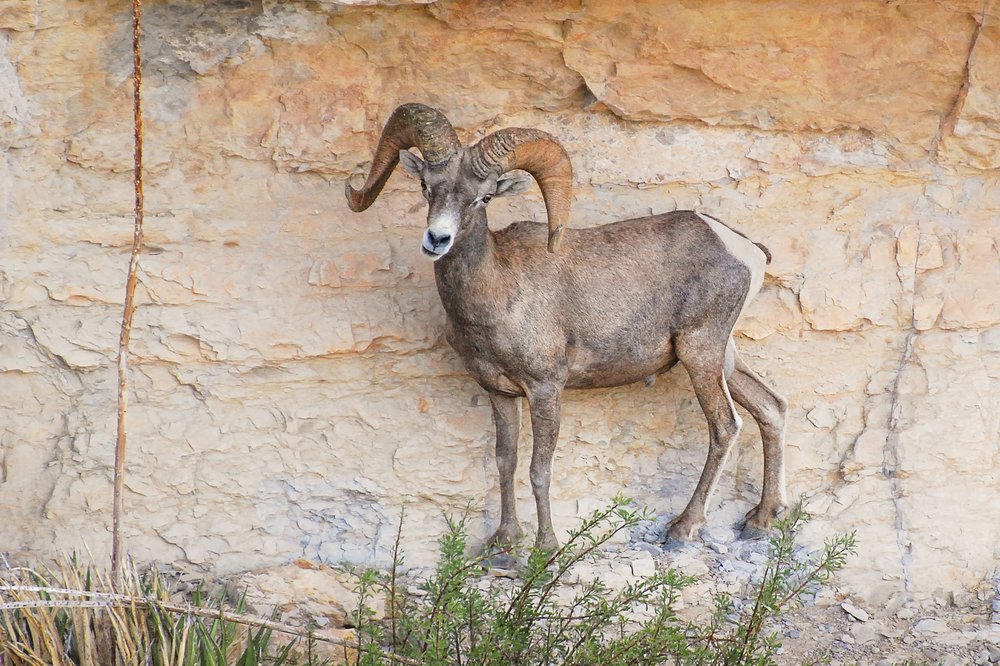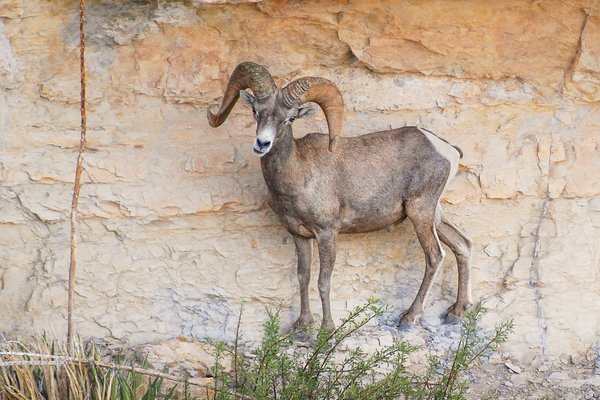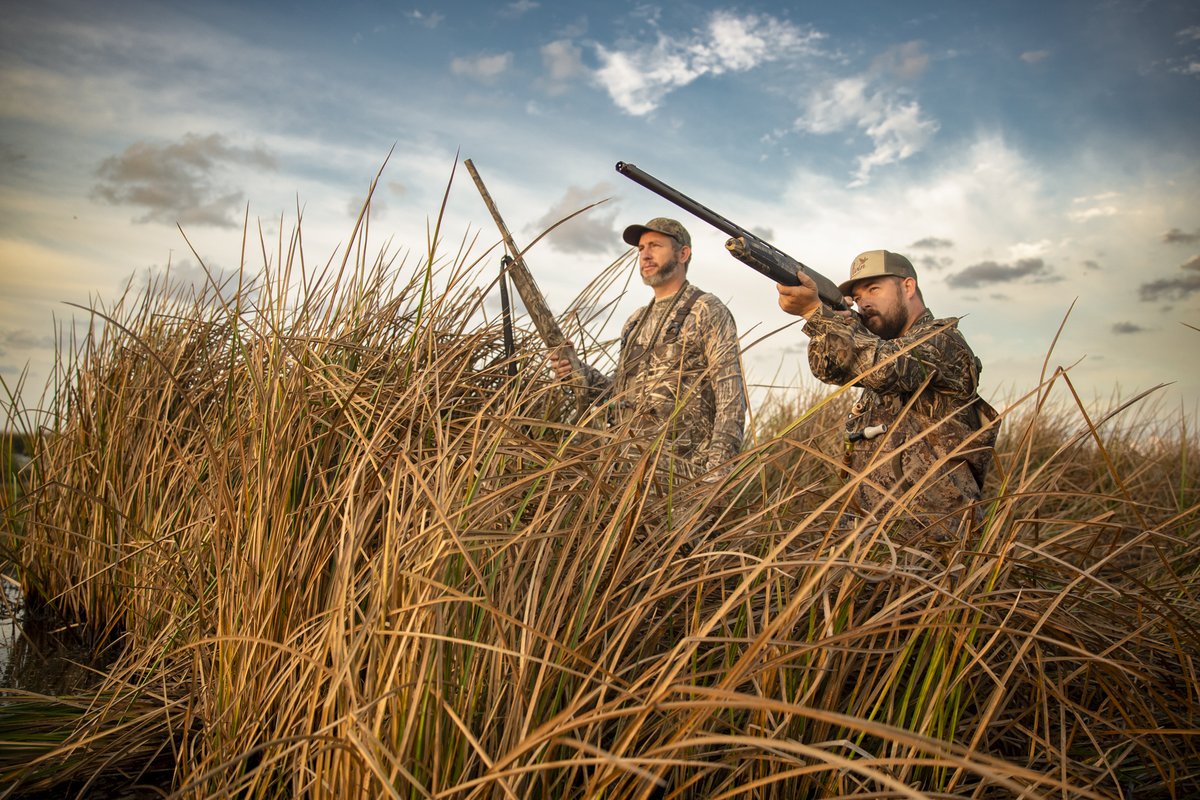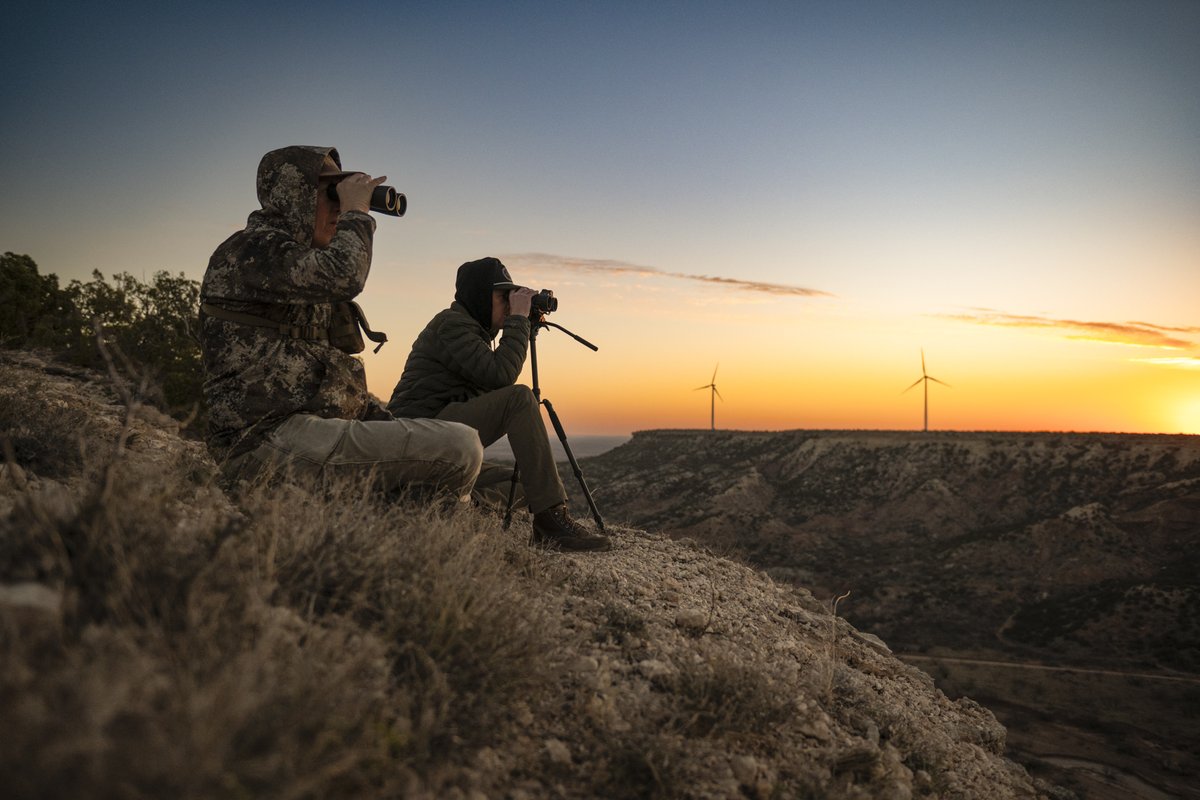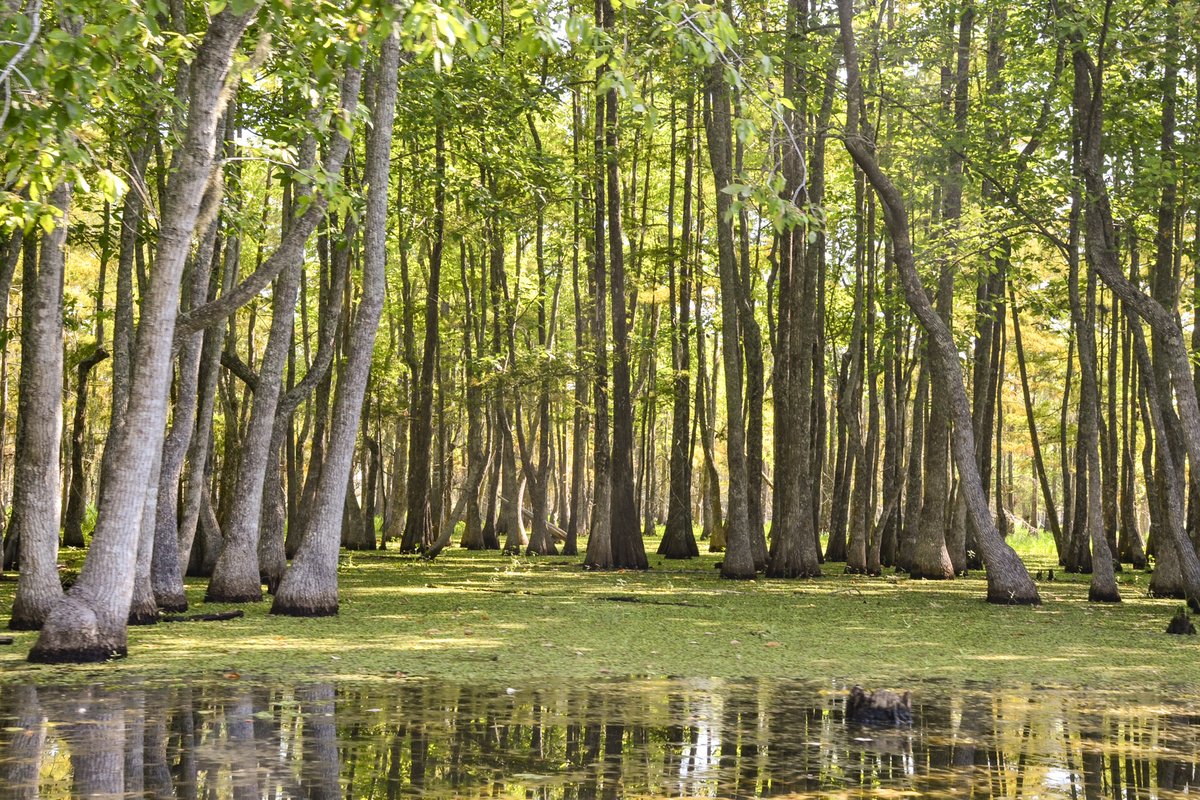It’s easy to see why desert bighorn sheep are a marvel at Big Bend Ranch State Park. The large, stocky sheep use their horns to crack open juicy cacti to eat. The males’ recognizable, often 30-pound brown horns curl behind their ears and point forward — useful weapons for fighting over females during rut, the breeding season.
Blink once and they’ve darted off, running remarkably fast with padded hooves perfectly suited to the rocky terrain.
Desert bighorn sheep used to roam over a dozen mountain ranges in West Texas. In 1903, unregulated hunting and diseases transmitted by livestock dwindled bighorn numbers to around 500. By 1960, they had disappeared from Texas.
The Texas Parks and Wildlife Department, the Texas Bighorn Society, landowners and others worked for decades to bring these sheep back to their native range across the state. While bighorn sheep are a beautiful and iconic sight, they aren’t just at Big Bend Ranch for aesthetics. Restoring the sheep to their historic habitat is vital for the continued health of the species.
“It’s what I like to call ‘not having all your eggs in one basket,’” says Froylan Hernandez, leader of TPWD’s Desert Bighorn Sheep Program. “If you start different populations elsewhere and lose one population, you always have these other baskets to draw from to continue the restoration effort.”
In 2010, TPWD biologists captured 46 sheep from the Elephant Mountain Wildlife Management Area and transported them three hours away to the Bofecillos Mountains of Big Bend Ranch.
It was an ambitious project. The sheep had to be individually captured in nets and blindfolded. Then they were flown down the mountain via helicopter, where researchers took samples and fitted them with radio collars. Next, they drove south — all the ewes riding together in one trailer, while the rowdy rams had to be separated into their own wooden boxes — to the release site at the southern edge of the park.
After a few years of adjusting to this new environment, the bighorn population began to grow. By 2014, there were around 90 sheep in the park.
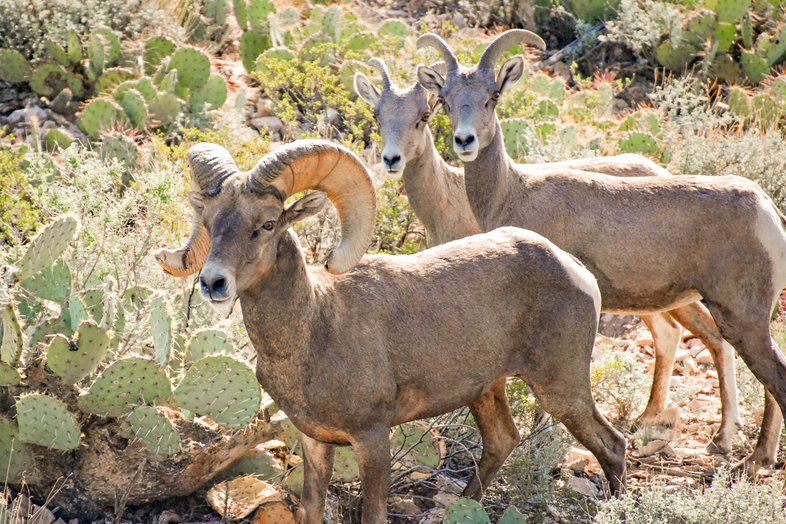
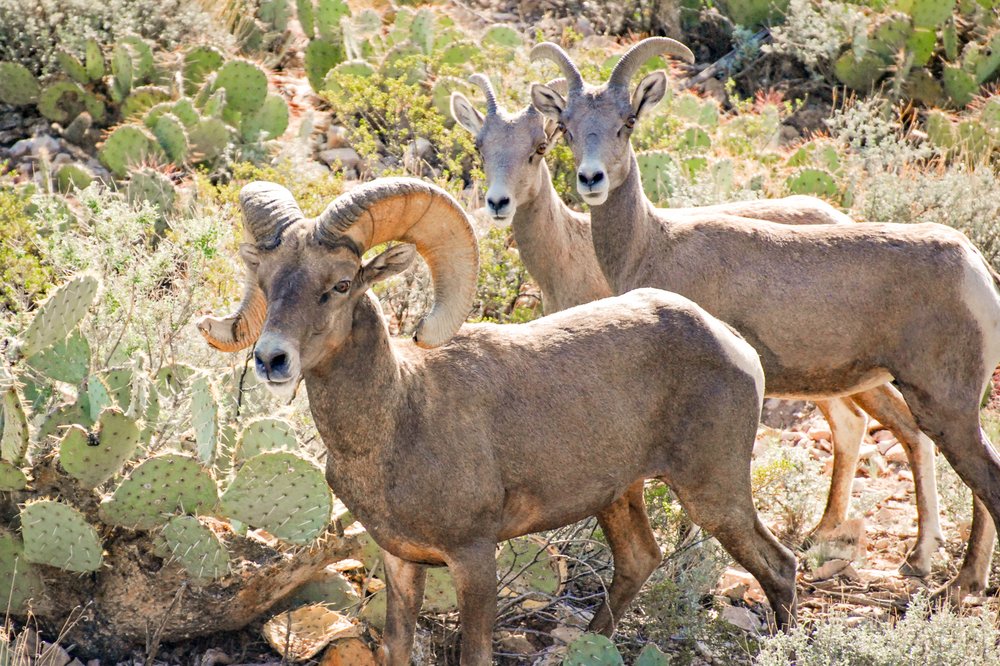
The best place to see bighorns is driving on FM 170 (the scenic River Road) on the flanks of Santana Mesa, near the La Cuesta campsite. On foot, visitors have reported seeing them near the west rim of the Fresno Canyon Trail and on bluffs near the Sauceda Ranger Station.
You can help conserve these majestic animals. If you spot or snap pictures of bighorns during your visit, be sure to notify park staff, who will relay it to the Desert Bighorn Sheep Program. Big Bend Ranch Superintendent David Renninger says he reported seeing six bighorns in the last 14 months.
Observations have become rarer in the past few years. Hernandez believes a disease event in 2019 dwindled the Big Bend Ranch herd to around 20 sheep.
“The reporting aspect is very important to me,” Hernandez says. “It allows me to see where the sheep might be going to and keep track of those natural expansion movements.”
Desert bighorn sheep restoration is an ongoing mission. Now, TPWD is in the planning stage for another sheep translocation — this time to Franklin Mountains State Park.
Hernandez is excited to see the species expand into another state park.
“There’s no better feeling than opening the gate and seeing them run off into the mountains,” he says.
